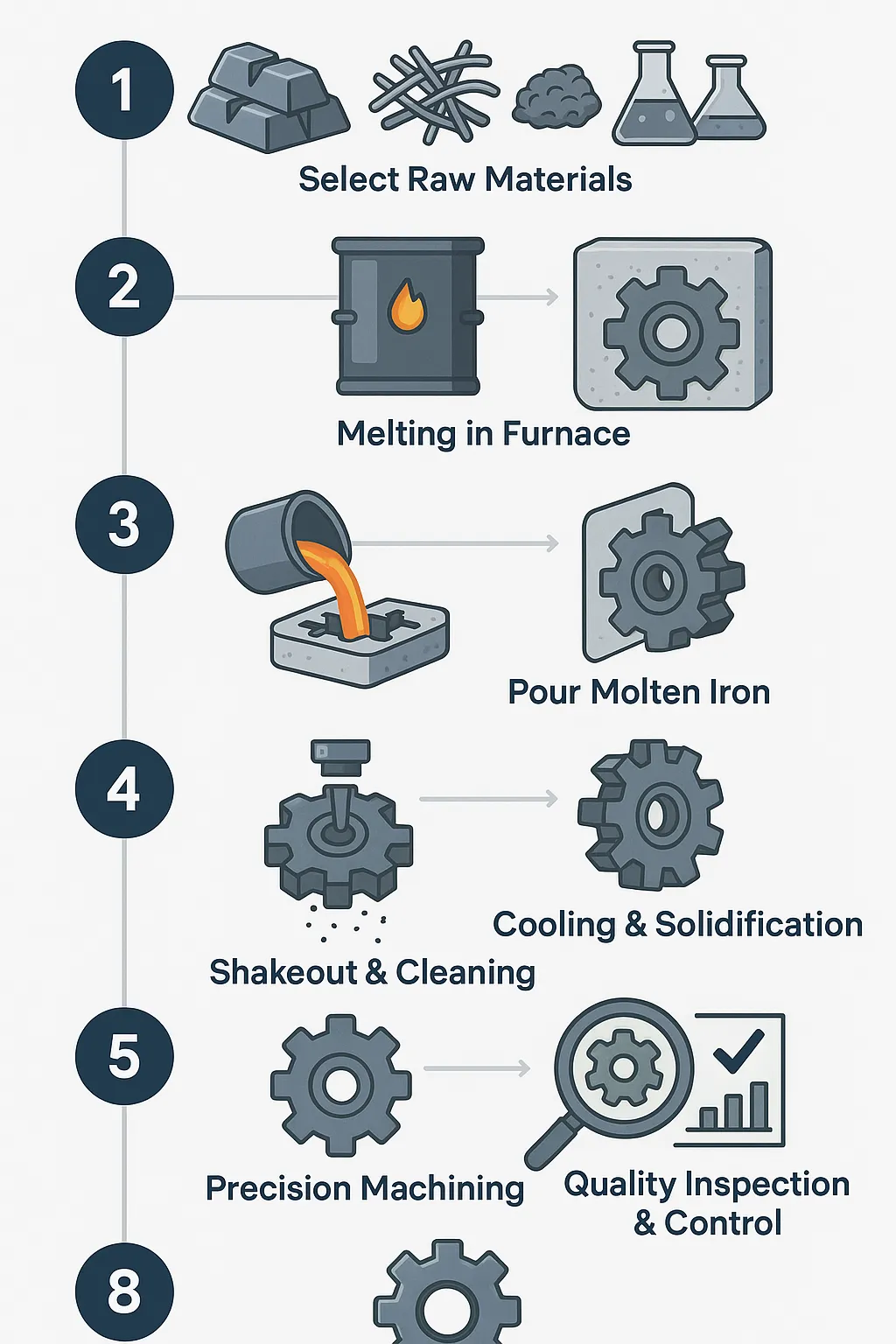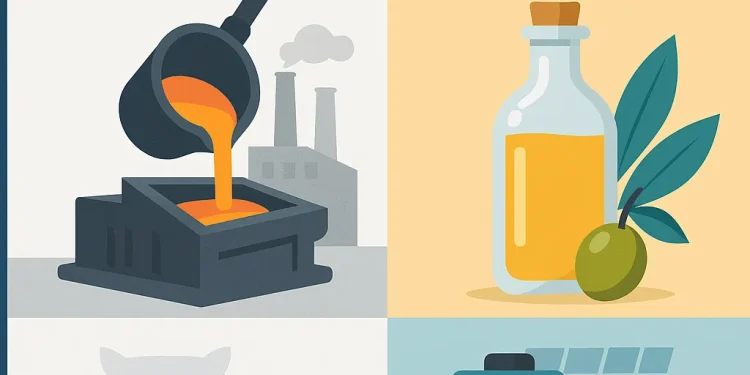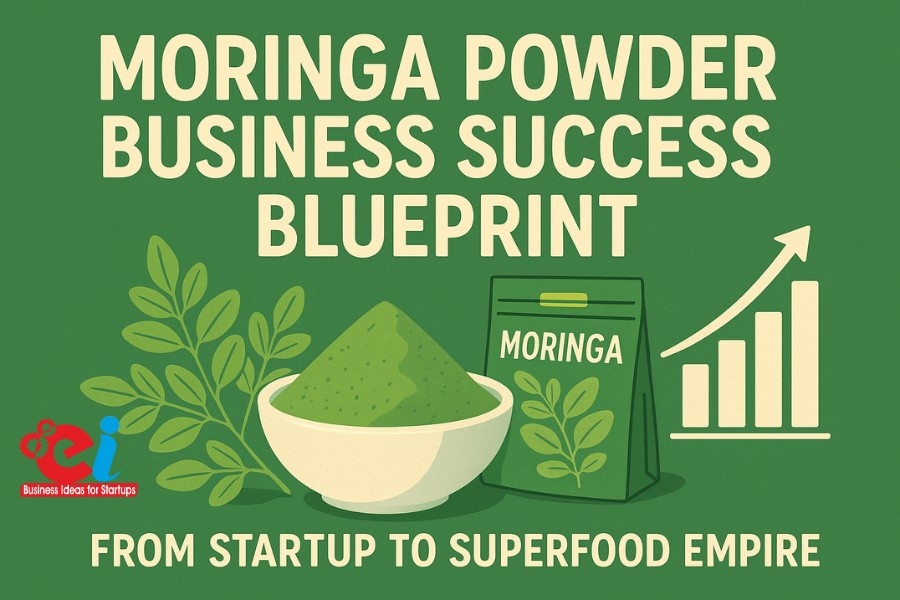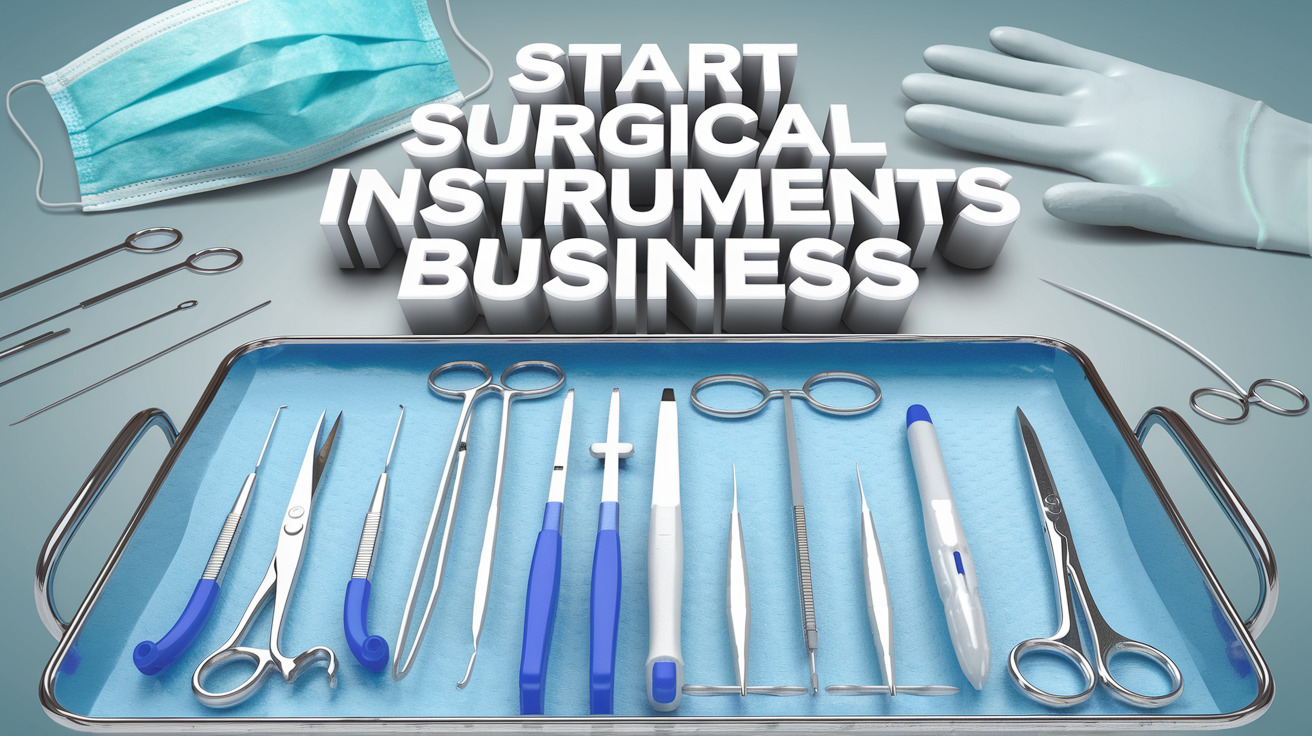High Growth Manufacturing Business: The present article discusses four high-potential sectors as regard manufacturing startups: cast iron foundry, edible oil production (sunflower, canola), ammonium bicarbonate, and battery energy storage system (BESS) modules.
Each of these products will be discussed in this article, along with the market outlook, demand drivers, and growth potential as they apply to informed startup decisions.
Ductile Iron and Cast Iron Foundry-High Growth Manufacturing Business
Foundries melt and cast metals into various useful shapes. Typically, they produce components in grey iron and ductile iron. Grey iron resists high stresses and has good vibrations dampening. Ductile iron, in contrast, has spherical graphite nodules, which confer strength and flexibility.
Product Applications
Grey cast iron comprises engine block, pipes, machine bases, pump housings, and brake rotors; ductile iron is converted into pressure pipes, crankshafts, gears, parts for automobiles, and components for heavy machinery. Other ductile iron applications are for manhole covers and valves.

Manufacturing Process-High Growth Manufacturing Business
1. Selection of Raw Material
The raw materials for making cast iron are mostly found in these materials: pig iron, scrap steel, and alloying elements.
- Base iron is provided by pig iron.
- Tensile strength is increased with scrap steel.
- The alloying elements (carbon, silicon, and magnesium for ductile iron) modify the mechanical properties.
Transition: The selection of raw materials is then followed by melting.
2. Melting Process
Foundries take raw iron and put it into a furnace to melt it. For melting, some common furnaces are:
- Cupola Furnace: It is an old foundry technique and employs coke as fuel and traditionally used for grey iron.
- Electric Induction Furnace: Uses electricity, cleaner and with precise control, that is more preferred for ductile iron.
Molten iron in ductile iron receives a treatment termed nodulating, which is usually adding magnesium or cerium. Instead of flakes, this allows for the formation of an increased spherical graphite nodule that provides the metal with increasing strength and ductility.
Read Our Project Report: Click Here
Transition: After melting, pouring is the next operation, where the molten iron flows into molds.
3. Mold Preparation-High Growth Manufacturing Business
Mold is the design or shape of the final product; most foundries pour sand.
- First, a pattern of part is made (usually wood, plastic, or metal).
- Then the shape of that pattern is made into a cavity in the sand with clay and water.
- Hollow sections may be formed with core sand.
Transition: With the mold-in process, the foundry condenses to pouring.
4. Pouring Molten Iron-High Growth Manufacturing Business
Foundries pour into the molds molten iron.
- For grey iron, one must pour immediately after melting.
- For ductile iron, it is also important to ensure that the magnesium-treated iron is poured immediately to preserve the nodular formation of graphite.
Transition: It is solidified, maintained, and shaped into a desired figure.
5. Cooling and Solidification-High Growth Manufacturing Business
- Iron cools in the mold, becomes a solid, takes a final shape.
- Generally, ductile iron needs controlled-cooling to prevent defects.
Transition: Once solidified, pieces need cleaning.
6. Shakeout and Cleaning
- Foundries shake out (remove the casting from sand mold).
- Employees take away the excess sand and risers (extra metal channels for flow).
- Impurities are removed by shot blasting or grinding and the surfaces are made smooth.
Transition: clean casting, then heat treatment as next step.
7. Heat Treatment (Optional)-High Growth Manufacturing Business
- Mechanical properties are modified by heat treatment.
- Sometimes grey iron needs annealing to decrease brittleness.
- In ductile iron, stress relieving is carried out to eliminate internal stresses.
Transition: After heat treatment, castings finish the processes.
8. Machining
- Usually castings requires machining very precise surfaces for critical parts such as components of automotive products.
- Here, parts are cut, drilled or milled in order to obtain the very precise dimensions required.
Transition: Ultimately, foundries check their quality before dispatching.
9. Inspection and Quality Control-High Growth Manufacturing Business
- Mechanical strength, ductility, and dimensional accuracy are tested.
- Common tests: tensile test, impact test, hardness test, and visual inspection.
Transition: Appropriated, therefore, castings will be delivered to customers.
Read Our Book: Click Here
Market Outlook-High Growth Manufacturing Business
The cast iron castings global market would be around 50 billion USD during 2024-25 and is estimated to develop at a rate of approximately 4-6 percent.
Majorly, the demand is from automotive (30 percent), followed by construction (25 percent) and agricultural machinery (15 percent). Asia-Pacific is the first region in production and consumption, and is followed by North America and Europe.
Read More: How to Launch a Successful Manufacturing Business of Aluminium Cans For Beverages
Growth Drivers
Automotive segments are constant demand generators, thus leading to several infrastructure projects. Innovations like 3D printed sand molds and lightweighting techniques into foundries promise to usher in great changes.
Cast iron, despite the alternatives of aluminum or steel, retains tags of cost-effectiveness and versatility.
Vegetable Oil Production (Sunflower & Canola)-High Growth Manufacturing Business
Vegetable oils are daily essentials. Among the other types of oil, sunflower oil, light oils rich in vitamin E, and canola oils that have very low levels of saturated fat and are heart-healthy are important. Both these oils can be used as well by the kitchen for culinary and industrial facilities and in biofuels.
Production Process-High Growth Manufacturing Business
1. Raw Material Procurement
- The main source of raw material is sunflower or canola seeds.
- Select high oil content varieties: sunflower seeds (~40–45% oil), canola seeds (~38–44% oil).
- Seeds should be clean, dry, and free from impurities.
- Reliable sourcing from local farmers or commodity markets is critical.
Transition: raw seeds are ready for processing and the plant is now ready.
2. Cleaning and Preparation
- Seeds must go through cleaners, sieves, and magnetic separators to remove dust, stones, and metal particles.
- Seed de-hulling some seeds to remove external shells which improve oil yield.
- Crushing or flaking improves oil extraction for canola by rupturing oil cells.
Transition- After preparation starts extraction process.
3. Oil Extraction
There exist two main forms,
a) Mechanical Pressing (Cold or Hot Press)
- The seeds are fed to screw presses or expellers.
- Oil is expressed from them by mechanical force.
- Cold pressing preserves nutrients and flavor while hot pressing increases yield.
b) Solvent Extraction (Optional for Maximum Yield)
- The leftover seed cake from pressing is treated with food-grade solvent (e.g. hexane).
- The solvent dissolves the remaining oil and later it is separated with evaporation to purify oil.
- Pressing and solvent extraction together applied by modern plants have the maximum efficiency.
Transition: crude extracted oil contains impurities needing refining.
Read More: A Complete Guide to Creating a Successful Manufacturing Business
4. Oil Refining-High Growth Manufacturing Business
- Improving oil’s taste, color, stability, and safety is what refining does. Steps include:
- Degumming: This process eliminates those phospholipids and gums through water or acid.
- Neutralization: This step gets rid of free fatty acids with caustic soda.
- Bleaching: This step involves bleaching clay to free oil pigment and make it clear.
- Deodorization: This is the separation of odor and volatile compounds through steam distillation.
- Winterization (Optional): This will separate waxes that cause future cloudiness under cold temperatures.
Transition: the refined oil is now ready for packaging.
5. By-products handling
- The seed cake/meal that remains after oil extraction is high in protein.
- As livestock feed, it is being used as a raw material for other industries.
- Proper utilization adds extra revenue streams.
Transition: finally, the refined oil is packaged for sale.
6. Packaging
- Packaged oil does have different types, such as bottles, tins, or pouches, but with regard to demand in the market.
- For quality maintenance, packaging must protect oil from light, air, and moisture.
- Size varies from as small of 500 ml bottles to as big as 20-liter containers.
Market Outlook-High Growth Manufacturing Business
Sunflower oil’s market is between USD 25 and 30 billion, growing between 5 and 6 percent per year. Canola oil is valued between USD 35 and 40 billion and grows at a yearly 3 to 4 percent rate. Demand is raised by income figures, health-conscious trends, and the food industry.
Considerations
Setup near agricultural demand centers to reduce transport costs. Setup as small-scale processing for cold-pressing into niche markets. Setup large-scale solvent extraction mills for mass production.
Maximizing by-product utilization would also add revenue. Setup a functional supply chain strategy, as prices of commodities fluctuate.
Quick Comparison-High Growth Manufacturing Business
| Factor | Sunflower Oil | Canola Oil |
|---|
| Source | Sunflower seeds | Canola seeds |
| Oil Yield | 40–45% | 38–44% |
| Saturated Fat | 10–11% | ~7% |
| Key Nutrients | Vitamin E | Omega-3 & Omega-6 |
| Uses | Cooking, snacks, some biodiesel | Cooking, baking, biofuel |
| Growth Trend | Rapid in emerging markets | Steady in North America/Europe |
Ammonium Bicarbonate Manufacturing-High Growth Manufacturing Business
Ammonium bicarbonate (NH₄HCO₃), in one way, resembles a white crystalline powder, and it is used from baking, chemical processes, and in some of the industries.
Production Process
Requirements of Material
Ammonium bicarbonate is formed with the help of ammonia (NH3), carbon dioxide (CO2) and water.
- Ammonia comes usually from Haber-Bosch plants.
- The carbon dioxide is usually obtained from fermentation, hydrogen productions, or chemical industries.
- Water acts as the medium for the reaction.
Transition: Chemical reactions come into play once available raw materials are present.
Read More: The $14 Billion Opportunity: Top Manufacturing Business ideas for New Entrepreneurs
Absorption / Reaction
- Operators dissolve ammonia gas in water to produce an aqueous ammonia solution.
- The carbon dioxide gas is bubbled through the said solution.
- It produces ammonium bicarbonate by reaction:
NH3+CO2+H2O→NH4HCO3
Temperature control is critical: for the solution is to remain cool (below ~36 °C), otherwise ammonium bicarbonate would decompose back into ammonia and CO 2.
Transition: Once the formation of the solution has taken place, crystallization of the product takes place.
Crystallization-High Growth Manufacturing Business
- Further cooling is done for the solution with the aim of crystallizing ammonium bicarbonate.
- Supersaturation is established, and crystals are visible.
- Continuous monitoring is done to ensure uniformity in size and pureness.
Transition: Once crystal formation is achieved, the next process is separation.
Filtration
- Separation of solid ammonium bicarbonate crystals from the remaining liquid will be done by filtering the solution.
- The most common methods of filtration will be either vacuum filtration or centrifugation.
- It prevents loss of fine crystals, and a consistent quality product is ensured.
Transition: In the last section, after filtration, crystals require drying.
Drying-High Growth Manufacturing Business
- Crystals are dried properly through hot air dryer and fluidized bed dryers.
- Gentle drying process, since ammonium bicarbonate decomposes at higher temperatures.
- The final product is white crystalline ammonium bicarbonate powder, ready for packing.
Transition: Last stage, quality checks before the final product is put into use.
Packaging
- Manufacturers pack their powder in airtight bags or containers to avoid moisture absorption and decomposition.
- Packaging varies in size as per their normal packs of 25 kg bags up to bulk containers.
- Improper storage should be under a cool, dry place to maintain the quality.
Uses
- Food Industry: It is a leavening agent in cookies, crackers, and biscuits.
- Industrial: A foaming agent in plastics, ceramics, and leather tanning.
- Fertilizer: Supplies nitrogen; however, the usage of this commodity is declining.
- Laboratory: used as a volatile buffer in biochemical processes.
Market Outlook-High Growth Manufacturing Business
Global market USD 1.3-1.5 billion and growing ~3% per year. Steady demand for food-grade material; declining demand for fertilizers. Success of the operation is based on targeting niche markets, quality, and export opportunities.
Considerations
Entry costs are moderate into the value chain. Airtight cool stores sustain quality. Higher purity levels, packaging, or specialized grades will add differentiation.
Battery Energy Storage System (BESS) Modules Overview-High Growth Manufacturing Business
A Battery Energy Storage System is a system that holds electricity later to be released for later use by battery modules, in support of grids, renewable energy and backup for commercial and residential operations.
Importance
BESS balances the intermittent renewable energy supply while stabilizing the grid frequency and peak shaving with backup power.
Market Outlook
Standing at USD 7-8 billion in 2024, BESS market can grow up to USD 30 billion by 2030 at an annual growth rate of 20-25 percent. First goes Asia-Pacific in deployment, followed by North America and Europe.
Products and Technology-High Growth Manufacturing Business
Most BESS employ lithium-ion batteries. The modules comprise the cells, Battery Management Systems (BMS), inverters, and cooling systems. New businesses could consider focusing on module assembly, turnkey systems, or BMS/software solutions.
Growth Drivers
The factors leading to increased momentum in growth include expansion in renewable energy, reducing costs of batteries, governments encouraging, and repurposing batteries in electric vehicles.
Challenges
Keep an eye to new chemistries and safety standards; sign long-term contracts with trustworthy battery cell suppliers, and enforce strict quality control.
Find the Best Idea for Yourself With our Startup Selector Tool
How NPCS Help You-High Growth Manufacturing Business
Niir Project Consultancy Services (NPCS) help entrepreneurs plan and launch their production companies. They do market surveys, techno-economic feasibility studies, plant layouts, process consultancy, and financial projections.
NPCS helps in risk reduction, discovering market opportunities, and entering with confidence into foundries, edible oil, chemicals, energy storage, and many others.
High Growth Manufacturing Business-Conclusion
These four sectors have immense potential. Cast iron foundries plus vegetable oil production are blessed with constant, dependable profits. Ammonium bicarbonate is ideal for very niche kinds of smaller businesses. BESS modules are said to have phenomenal growth in the clean energy space. Choose a business that suits your resources, acumen, and openings in the market.
High Growth Manufacturing Business: FAQs
What is the difference between grey and ductile iron?
Brittle grey iron can absorb some vibrations while ductile iron offers higher strength and flexibility and is thus generally employed in high-stress parts.
What are the raw materials required for sunflower or canola oil generation?
Sunflower or canola seeds, refining chemicals, water, energy, and packaging materials.
What are the major uses of ammonium bicarbonate today?
Baked goods, niche fertilizers, industrial foaming, leather tanning, and buffering in labs.
What does a BESS module mean?
It is a battery energy storage system, which stores energy and releases it on demand while integrating the battery management system and inverters to ensure safety of operations.
Which sector has the highest growth potential?
BESS is the fast-growing sector with the annual growth ranging between 20% and 25% due to the increasing uptake of renewable energy.


























